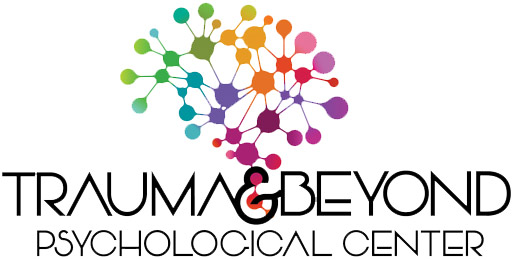Trauma Informed
You may ask what makes “trauma informed” therapy different then classic psychotherapy, and why this distinction is so important. We’d like to address this to help you understand why the trauma informed therapy is so crucial for trauma healing. Classic therapeutic approaches generally include styles such as psychodynamic, psychoanalytic, cognitive behavioral or family systems. These are not the only styles that have been utilized for decades but these are the styles that have become most popularized in our culture. However, the more we learn about the connection between the brain, body, and feelings systems, through new discoveries in neuroscience, the more we understand about the necessity of having the therapeutic capacity to target all aspects of the human systems! For clients who have developed a pattern of being more in the “left-brain,” they are likely going to want to work with the cognitive, the “left-brain”, they can do so with top-down strategies. The top-down style begins in the outer cortical, via thoughts or concepts, and with therapist interpretation, straight narratives, and behaviors. Most often, though, these styles of communication targeting the “left-brain,” analytic parts of ourselves, keep us “heady.” How many clients refer to themselves as, “thinkers not feelers”? I’ve had clients refer to themselves as, “cut-off from the neck down.” Why would one want to only target their left brain? Perhaps, out of fear of what they may find in the right brain or in the body? Perhaps fear of touching into that which they most fear, consciously or unconsciously!
Trauma Informed Methods
We believe that left-hemisphere healing alone is not sufficient for deeper healing and movement to an empowered future. If you want to go deeper and establish a real “change,” we believe you must work with the entire being, “speaking” with the left brain, along with connecting and working with the “right-brain” feelings, and even deeper with the sensations and messages of the body (which can be pre-verbal). This is why trauma informed modalities which include body sensations and emotions are vital for the deeper healing and recovery work “beyond” trauma. EMDR is one such method using bilateral stimulation working to integrate right hemisphere and left hemisphere, while at the same time combining negative cognitions, bodily sensations and emotions. Although descriptions of the work will differ, the above description of system regulation is a commonality of trauma informed methods such as Trauma Resiliency Model (TRM), NeuroAffective Relational Model (NARM), Eye Movement Desensitization Reprocessing (EMDR) and Sensorimotor Psychotherapy. They all share this facilitation of whole person integration. And of course, during the therapeutic work with all these modalities, client and therapist share in the healing processes enabling an integrative, holistic, corrective emotional experience.
Development Stage
Why is the right brain work so important? Developmentally, neuroscience shows us that infants are born with the right hemisphere online. In fact, the number of neurons peaks even before birth (zerotothree.org). The left brain doesn’t fully come on line until the infant is moving towards middle of first year with language development. We know now though that the infant’s nervous system and physiology is developed even earlier in utero. At this developmental stage, development of the embryo is effected by the mother’s nervous as well as other epigenetic factors effecting neural-development. The infants brain starts to develop and “takes-in” this information through various systems. It is of the utmost importance that if we are working to heal these deeper subcortical layers than we can’t do it by working “top-down” through language alone, we have to do it working “bottom-up” through the nervous system, and the right brain. We can work with clients through their senses: sense of smell, touch, sight, hearing. “We can work with clients through right-brain to right-brain communications” (Allan Schore, 2018). Notice for example how mothers and infants connect. It is primarily through the gaze of the eyes, the touch of the skin, the sounds of the sing-song voice, the being in the presence of another with no words being spoken. The infant being held and the love conveyed through all the non-verbal mechanisms is what creates healthy development to self and others, i.e., healthy attachment. What passes between mother and infant doesn’t have to be words it is the “energy,” the “felt-sense” of the relationship. You know how sometimes a person might say, “I didn’t like his energy!” We believe that what is being picked up in these types of communication are non-verbal, right-brain to right-brain sensory communications. Interesting to think about how in utero we first pick up information through our gut-reactions, from mom’s umbilical cord to the baby’s belly. We get instinctual first level sensory information arriving to our gut (Aline LaPierre, 2017). This helps us see how so much distress (e.g. irritable bowel syndrome, stomach issues, butterflies), begins in our belly. Trauma informed therapy utilizes collaboration, mirroring, and validating, to facilitate deeper emotional connection.
Trauma and Beyond ® Therapeutic Team
Why is it so difficult to access the right brain or why does a person become “heady?” When trauma happens early on, the information overwhelms the infant/child’s system and as a protective mechanism, a survival strategy, the trauma gets pushed out of consciousness either through repression or dissociation. Other’s might call this a “defense,” in a pejorative way, but we see it as a necessary and valuable strategy that was developed to protect and support survival; thus has to be treated with respect and gentleness. Strategies that one time served a valuable function may no longer serve a purpose and in fact may be limiting or hurting the person. This is why to undertake trauma work the provider has to be trained in working with this “under-the-surface” system. The higher level cortical work is valuable at the right time, but it isn’t enough, the therapist-client team has to be able to connect to the underlying repressed/unconscious material. And we believe that this “connection” between therapist and client is vital to being able to connect to, and heal from these ruptures of the system. Ultimately we want to help clients integrate sensation, thought, and feeling. In this integration is where you find the “sweet-spot” for self-regulation (e.g. affect regulation, physiological regulation, emotional regulation). This capacity to remain calm and regulated or become sufficiently excited to achieve and embrace nuances of life is called the window of tolerance. This is the space where you find the lightness beyond the scars of trauma. Herein lies the playfulness, the passion, the joie de vie.
This is why the Trauma and Beyond ® therapeutic team are trained to listen, see, and hear to the whole person from every level of being. To contact us please call (818) 651-0725 or email Drjoanne@traumaandbeyondcenter.com and Drlynne@traumaandbeyondcenter.com.



